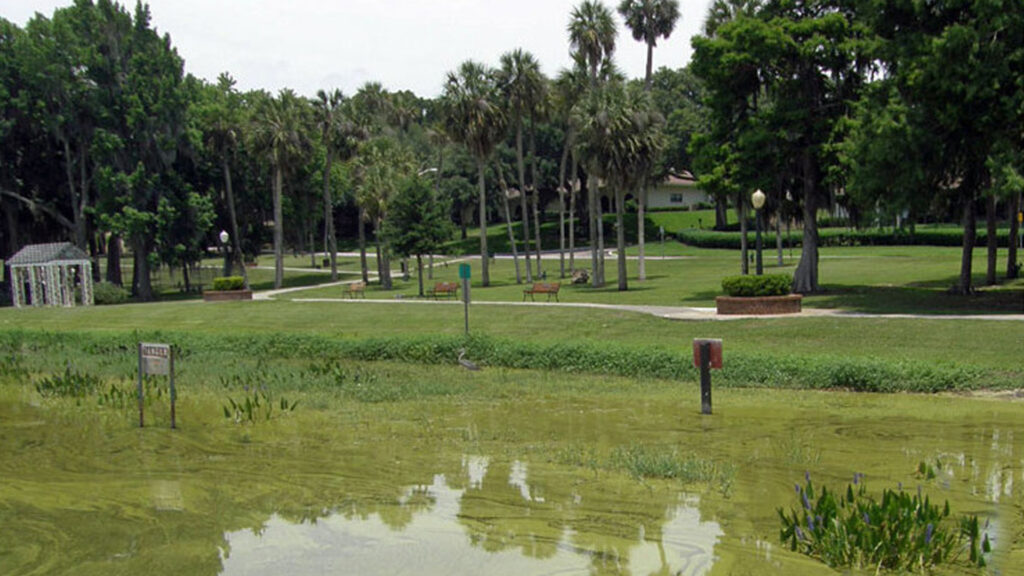By Howard L. Simon, Clean Okeechobee Waters Foundation
The Florida Fish and Wildlife Conservation Commission recently found red tide blooms lurking off the coast of Southwest Florida from Pinellas to Lee counties, reminding us that we have unfinished business to protect Florida’s waterways.
The reports are of generally low concentrations, though medium concentrations have been reported in Charlotte County and in Lee County around Sanibel Island. Some folks residing closer to the beaches of Sarasota, Lee and Collier counties have reported respiratory discomfort.
Red tide concentrations now usually mean fish kills later. But if these red tide blooms increase in intensity and come closer to our shores, and especially if we see rotting and putrid fish on beaches again, there will be finger pointing about what could and should have been done.
But why wait for another calamity?
With the Legislature convening for its annual session in March, policymakers should not lose the opportunity to protect public health and our waterways. They can use what we know about the interplay between blue-green algae in freshwater and red tide in the saltwater of the Gulf – specifically, how the former feeds the growth of the latter.

In 2019, after Florida was hit hard by the outbreak of both harmful blue-green algae and red tide, newly elected Gov. Ron DeSantis appointed a Blue-Green Algae Task Force consisting of the state’s leading environmental scientists who, in October of that year, issued eight recommendations addressing water quality and public health.
One recommendation addressed the 2.5 million (their estimate) unregulated and uninspected “onsite sewage treatment and disposal systems,” commonly called septic tanks, which are scattered throughout the state.
The governor’s task force noted that although septic systems are “designed to manage human health risks associated with the introduction of pathogens to the environment,” they are “also a well-known and substantial source of nutrients to groundwater and surface waters … (and that) nutrients in the effluent from these systems contributes to the development and maintenance of harmful blue-green algae blooms.”
They recommended “broader regulatory oversight of onsite sewage treatment and disposal systems to ensure that those systems function properly, protect the environment against nutrient pollution and are protective of human health.”
Science led to policy recommendations. The task force called for “the development and implementation of a septic system inspection and monitoring program with the goal of identifying improperly functioning and/or failing systems so that corrective action can be taken to reduce nutrient pollution, negative environmental impacts and preserve human health.”
Homes relying on septic systems eventually need to be connected to a sewage treatment facility, but until then inspections and repairs will have to suffice.
Some context is necessary: Fifteen years ago, the Legislature recognized the serious threat to water quality and public health by requiring that septic systems be inspected and, if necessary, repaired every five years.
But, in 2012, before the program began, the Legislature repealed the requirement with the approval of then-Gov. Rick Scott. That regrettable decision has left Florida with no requirement that, following their installation, septic systems be inspected. We now have millions of possibly leaking septic tanks along the shores and banks of our lakes, rivers and streams.
So, instead of a seemingly arbitrary timetable for inspections, let’s require inspections of septic systems, as other states do, when a property changes hands.

And so that we don’t let cost stand in the way of protecting the environment and public health, the Legislature should create a grant program to cover the cost of inspections (and if necessary, repairs) for low-income homeowners – just as was developed 15 years ago.
Inspections of septic systems differ from inspections that are recommended best practice for home buyers – the usual inspections of the roof, electrical system, heating and ventilation, and plumbing done by prospective home buyers.
Inspections of septic systems have wider social consequences beyond the buyer. There is an urgent societal need to retard the growth of harmful algae blooms that cause fish kills with disastrous consequences for our tourism economy, and to reduce the risk of liver cancer, respiratory illnesses and neurological diseases such as ALS and Alzheimer’s through exposure to the blooms.
Requiring inspections (and repairs if necessary) when a property changes hands should secure broad support. Realtors have as much commitment to clean water in our communities as the most vociferous environmentalist.
The recommendations of the governor’s Blue-Green Algae Task Force deserve the Legislature’s attention.
Let’s start with septic tanks.
Howard L. Simon, Ph.D., is president of the Clean Okeechobee Waters Foundation and a member of the Calusa Waterkeeper Advisory Committee. He served as executive director of the American Civil Liberties Union of Florida from 1997-2018. Banner photo: A sign warns of red tide off the coast near Naples (iStock image).
Sign up for The Invading Sea newsletter by visiting here. To support The Invading Sea, click here to make a donation. If you are interested in submitting an opinion piece to The Invading Sea, email Editor Nathan Crabbe at nc*****@*au.edu. To learn more about harmful algal blooms, watch the video below.




Excellent article, Howard!!!! So agree with you!!!
No doubt there are problem septic tanks in proximity to Florida’s waterways. But what percentage of septic tanks are arguably not in close enough proximity to be a threat? Must we paint with such a broad brush?
Septic tank monitoring will be very costly and require the development of a new bureaucratic system to be phased out later. Instead, the state government should assist local authorities in developing and financing centralized waste systems. A septic system’s lifespan is limited. Once it fails, the homeowner could be looking at significant expenses. As septic system parts deteriorate, sewage backups, slow drains, foul smells, and pooling water are possible. On the other hand, properties connected to city sewers rarely encounter these problems, are better equipped for periods of heavy use, and require little homeowner maintenance.
Red tide outbreaks and the attendant fish kills and unbreathable air are increasing in frequency. Why the legislature won’t act is yet another baffling question. Well, not exactly baffling given the overarching belief that climate and nature exist separately from development. If Tallahassee does not act in a wise manner, soon, yesterday, the only people who will e able to live in Florida are those rich enough to build indoor refuges. Of course, the fish, birds, panthers, bears, foxes, tortoises-what is left of them anyway-will be left to fend for themselves.